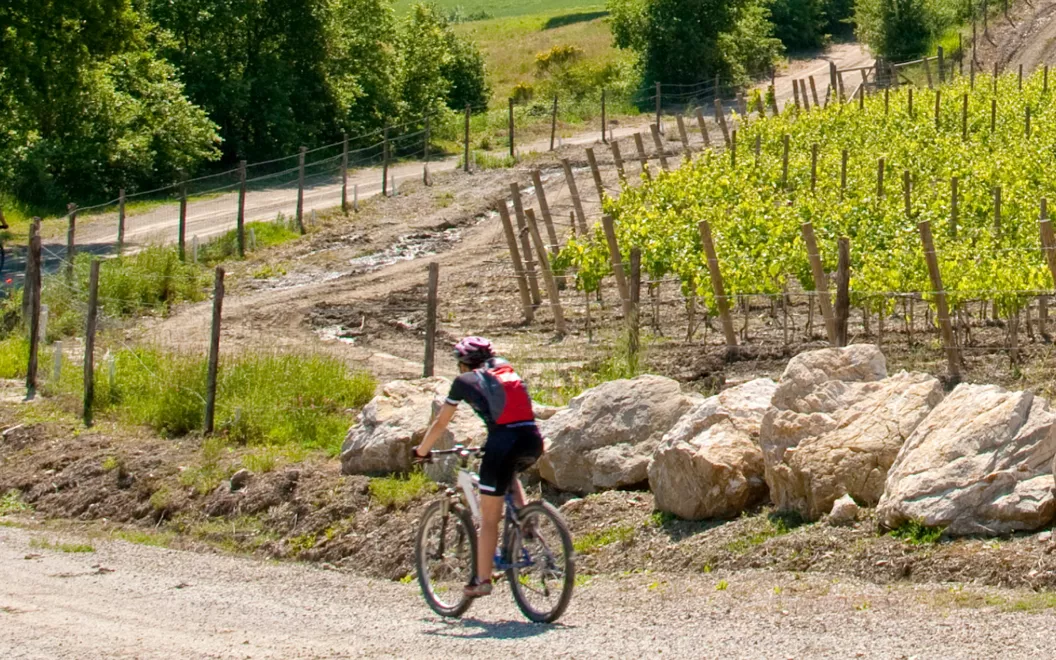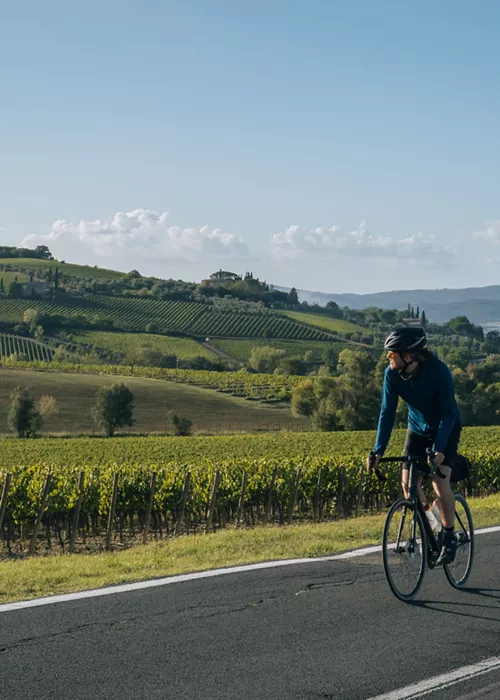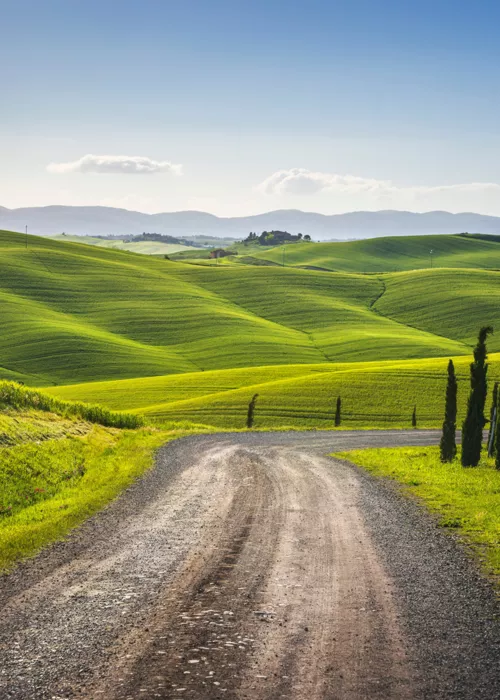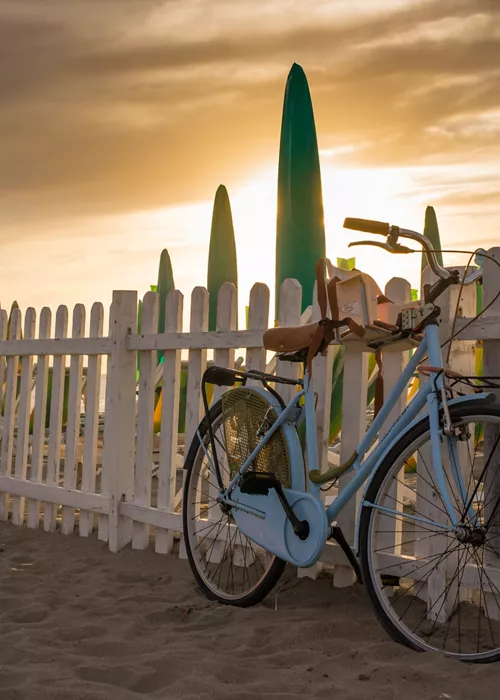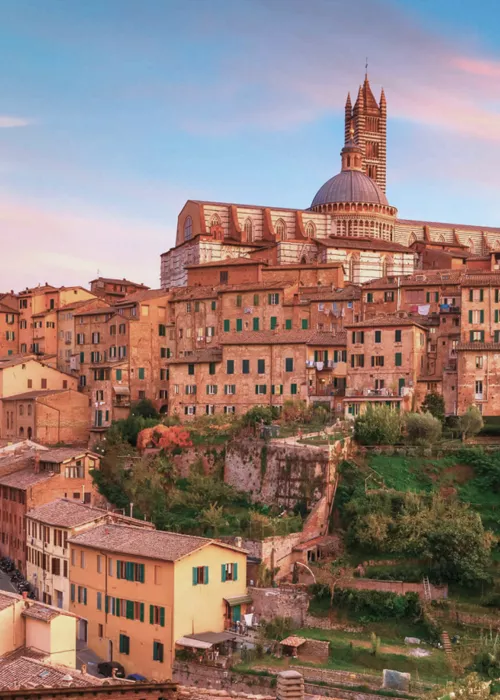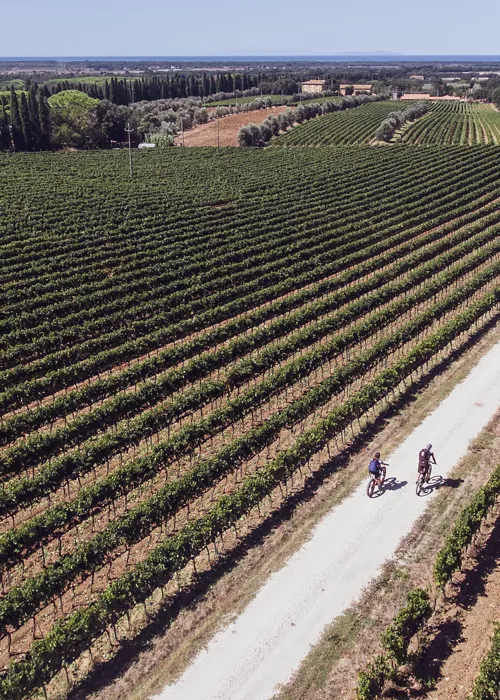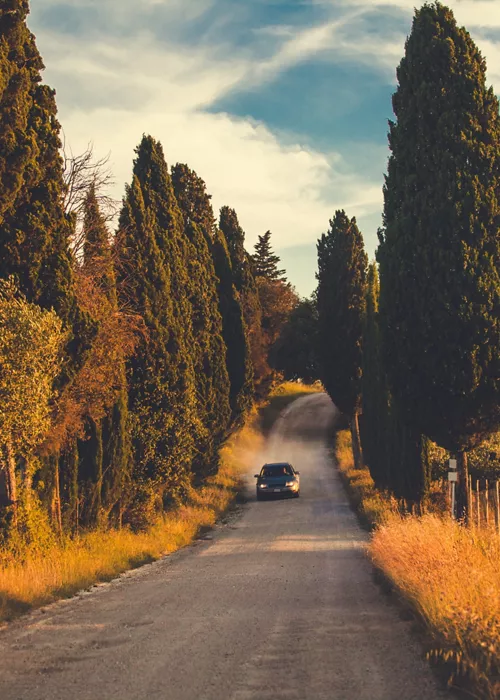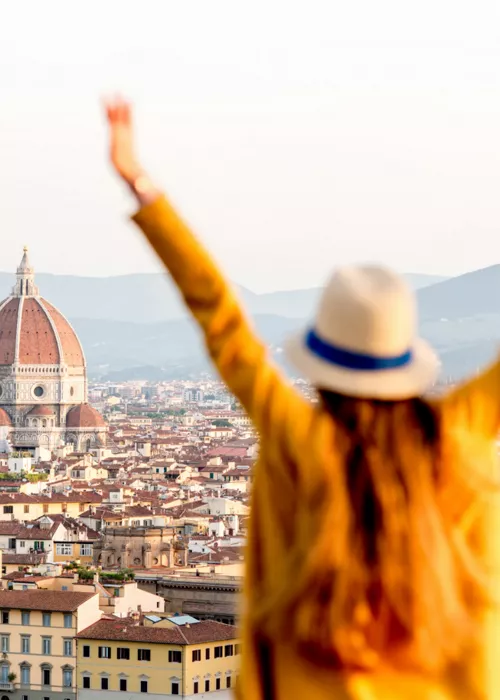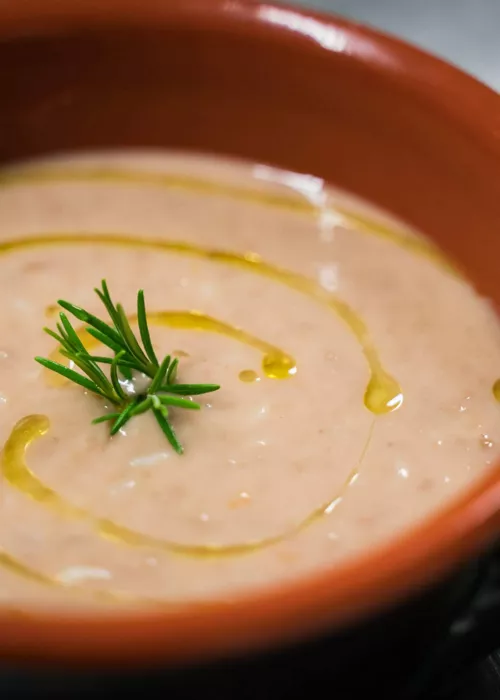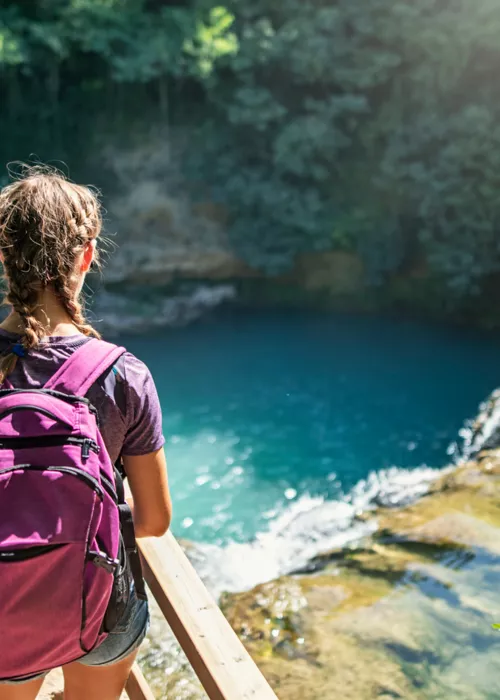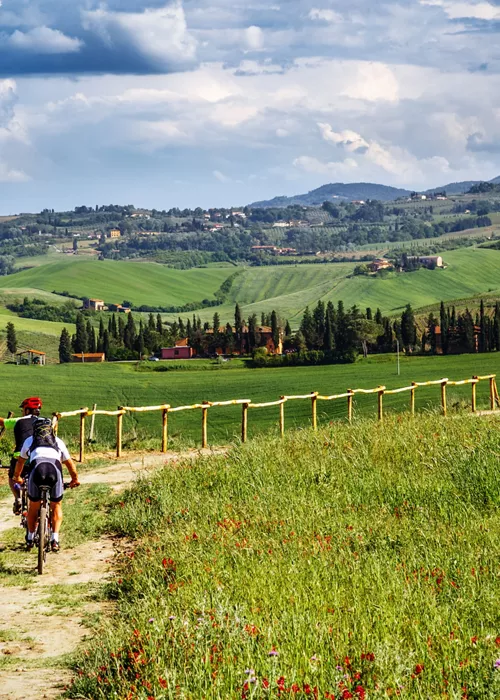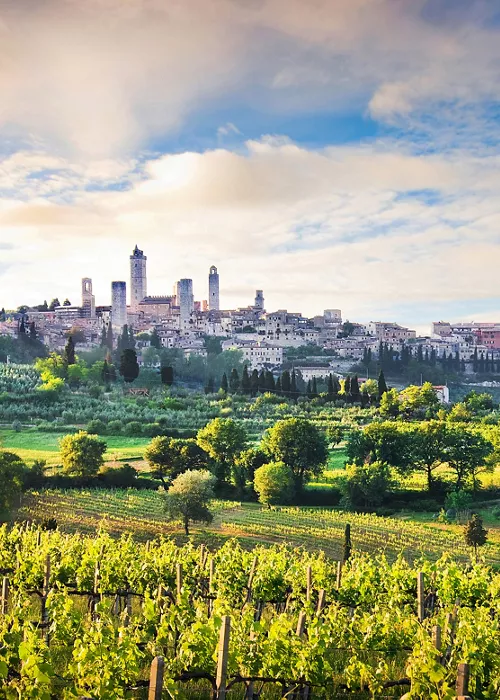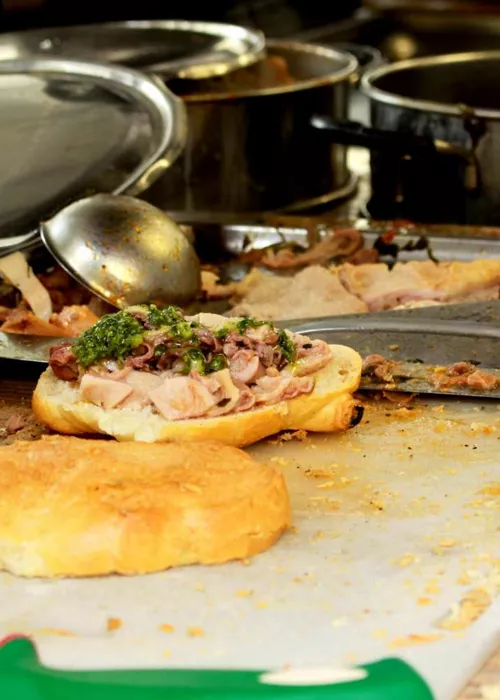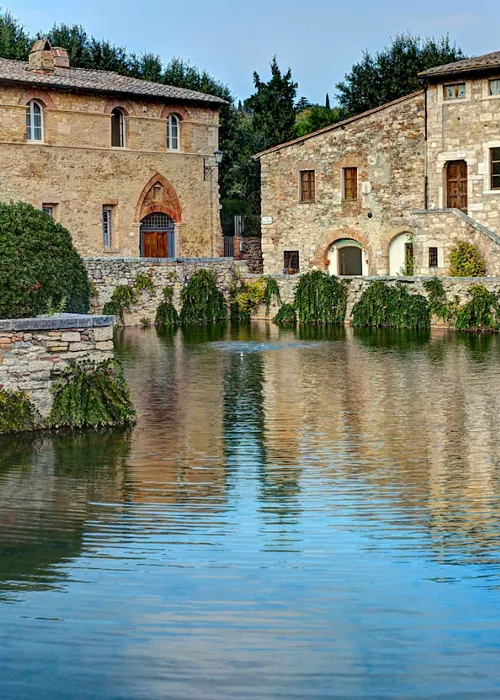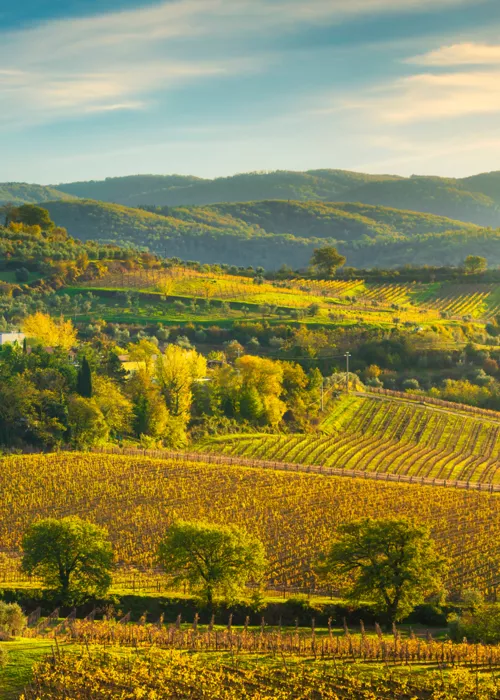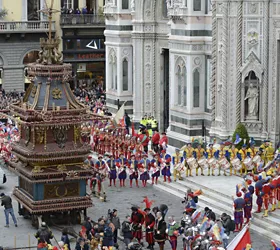Amidst medieval villages and enchanted hills: cycling along the gravel roads of the Strade Bianche
4 minutes
It is a route loved by professional cyclists (including many big names), but also by those who ride for passion. After all, all the ingredients are there. No major ascents, but several climbs, especially on the 11 gravel sectors adding up to 63 kilometres – the DNA of the race. The roadbed is well kept, but the vibrations, that from the ground reach the arms, recall the effort involved in ancient cycling, unaware of the asphalt and its easy promises of glory. The setting, however, is worth the effort. A blend of art, culture and food and wine excellence with only one risk: it makes you want to get off the saddle and enjoy a unique territory in the world.
Starting from Siena
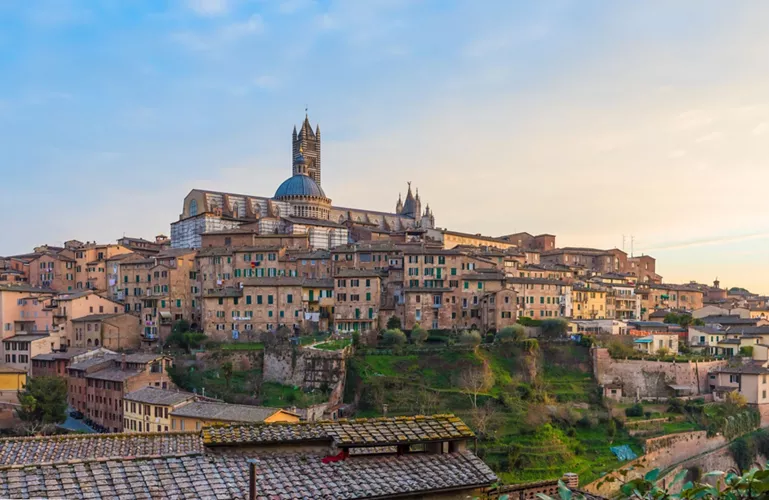
The city of the 17 Contrade, or districts, is the core of the competition, home to both the start (from the Fortezza Medicea) and the finish (in Piazza del Campo). A destination that in itself is worth a long weekend, considering the seal it received in 1995 as a UNESCO World Heritage Site. The ancient Roman colony, which reached the height of its cultural splendour between the end of the 13th century and the first half of the 14th century, has worked its magic over the centuries. It has stopped time and has kept its medieval soul intact.
Etruscan land

But the route does not allow you to get lost in its maze of paved alleyways. A few kilometres of tarmac road and the town is already behind us. After 18 km the first gravel sector, straight and slightly downhill. The real challenge is in the second sector, a long climb with gradients over 10% that leads straight to Radi, where the route takes in the gravel road number 3. You reach Murlo, a small village with a rural soul that hides a precious treasure: the Antiquarium of Poggio Civitate, an important archaeological museum dedicated to Etruscan culture.
The Crete Senesi
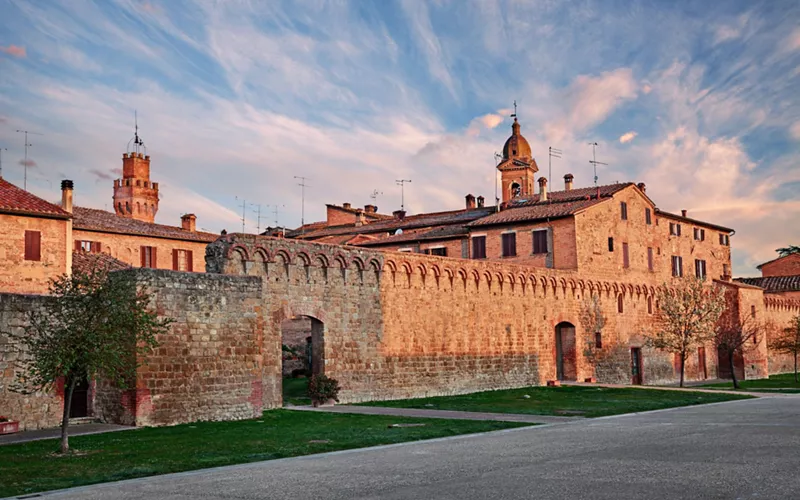
The next stage is Buonconvento, where heaven and hell converge. The climb up to Montalcino, the land of Brunello, is just around the corner, but it is not the time to think about it, as a 4 km stretch with gradients of up to 5% awaits you. You’d better comfort yourself with the panorama of the Crete Senesi: immense expanses of clay that form sinuous hills, almost seductive but only apparently so. In fact, this undulating landscape, cultivated with wheat and dotted with rows of cypress trees, conceals some very tough climbs.
San Quirico d’Orcia and Bagno Vignoni
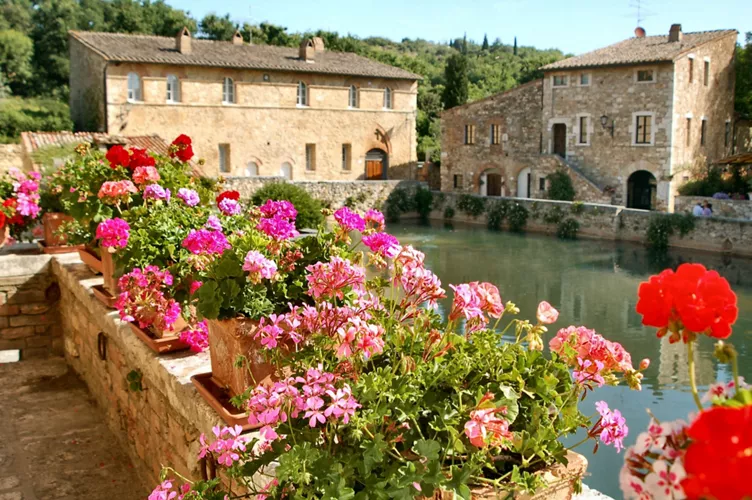
There is little time to catch your breath. The fifth and sixth dirt-road sectors begin just past Torrenieri, with only one kilometre on paved road in-between. We are in the Val d’Orcia, a Unesco heritage site since 2004: the land that over the centuries has enchanted photographers and directors, popes and Renaissance painters, tourists and lonely hearts. It is worth coming back here the next day to visit San Quirico d’Orcia, the medieval village on the Via Francigena and, above all, the hamlet of Bagno Vignoni. It is a small spa with a spring that, at a depth of 1,000 metres, feeds a pool built in the 16th century and is nested in the village main square. You can rest assured: diving is forbidden.
The charm of Pienza
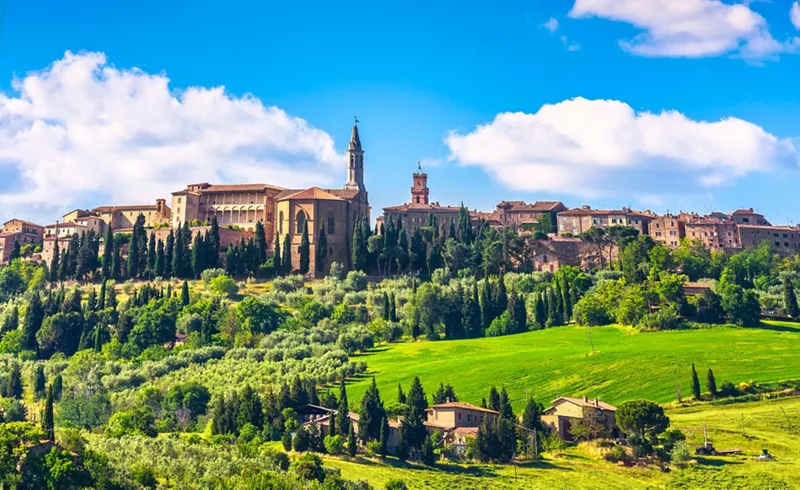
You might as well dream about the healing power of those waters or cast an eye over the cinematic scenery in which you are riding. These are the wheat fields that surround Pienza, a Renaissance jewel built by its most famous citizen, Pope Pius II. A town of pecorino and romance (according to Giovanni Pascoli: "Born from a dream of love and a thought of beauty"), but also a film set. Director Ridley Scott filmed The Gladiator here. Just enough to think back to those scenes, and it’s time to focus on the pedals. At San Martino in Grania the unpaved sector number 7 begins: it is a technical sector with several ascents and descents and a final winding climb that leads back to the paved road. But the next sector, beginning in Asciano, is the most grueling of the race: 11.5 km of major climbs and descents that test both the legs and the lungs.
The finish in Piazza del Campo
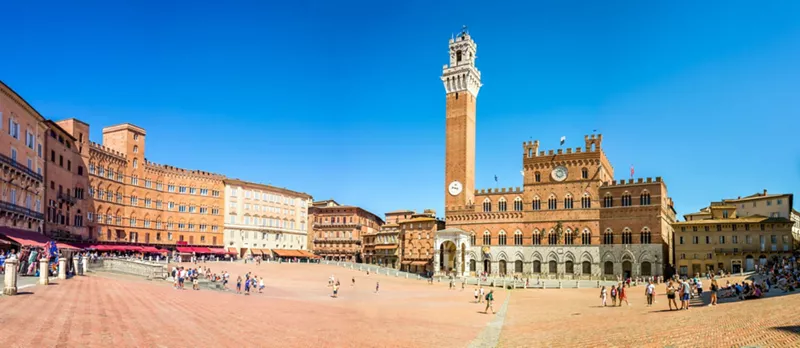
In comparison, the last three dirt-road sectors, upon approaching Siena, are a cakewalk. With 900 metres to go, the stone pavement begins, just past the Fontebranda Gate, with gradient reaching peaks as high as 16%. You need a strong grip and a strong heart ready for the last effort: the finish line is at the Campo, as the Sienese call the famous shell-shaped square where the life of the city has always pulsated. The 88-metre Torre del Mangia, annexed to the Palazzo Pubblico and well worth a visit, is watching from its height.
By the RCS Sport editorial team.


